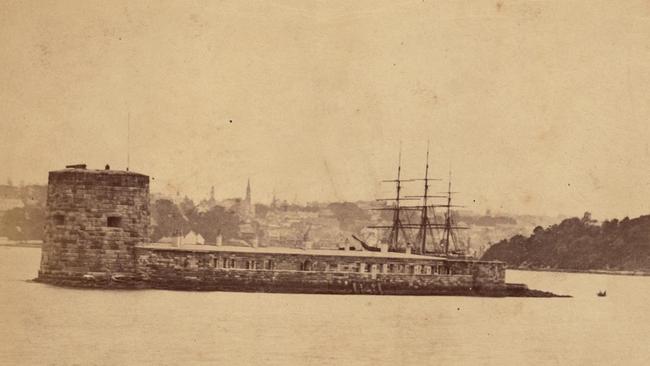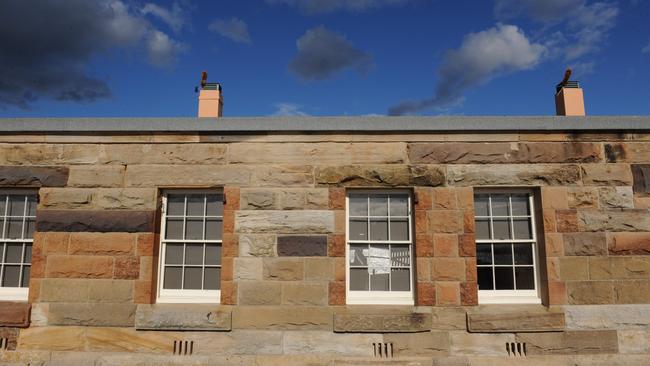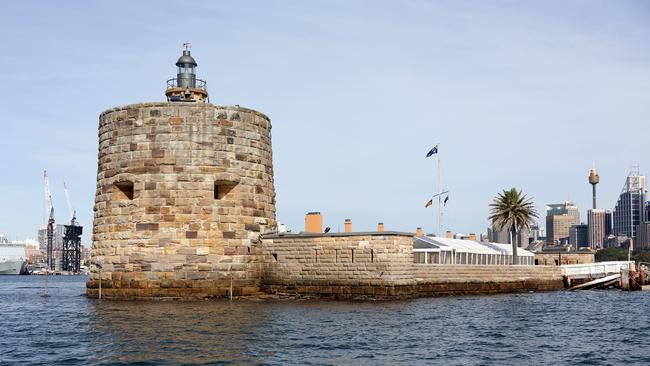Fort Denison’s place in Sydney’s history may surprise you
Those lucky enough to commute to work by ferry from Manly each day would have passed it countless times but few might know Fort Denison’s history.

Nth Beaches
Don't miss out on the headlines from Nth Beaches. Followed categories will be added to My News.
Those lucky enough to commute to work by ferry from Manly each day would have passed it countless times but few might realise that Fort Denison was the last Martello tower built in the British Empire and the only one built in Australia.
The 140 or so Martello towers built by the British during the first half of the 19th century were inspired by a circular fortress built by the Genoese on the island of Corsica in 1565.
The fortress built by the Genoese on Torra di Mortella was attacked by two British warships in 1794 but the 106 guns aboard the two warships were not enough to win the day and the fort was only captured by land-based forces.

So impressed were the British by the effectiveness of the fortress at Torra di Mortella that they copied the design and used it to build more than 140 like it around the world.
They were usually for coastal defence, although the British misspelt Mortella, which became Martello.
The French and the Americans also copied the Martello design for coastal fortresses.
Unfortunately, some of the Martello towers built by the British have not survived the passage of time but Fort Denison is one of many exceptions and remains in good repair.

Fort Denison is one of eight remaining islands in Sydney Harbour out of the 13 that existed in 1788, five of the original islands having been connected to the mainland over the years.
When the First Fleet arrived in Sydney in January 1788, what is now called Fort Denison was a small, rocky outcrop about 22m tall that the Aborigines called Mattewai, Mattenwaya or Huddawahnyuh but which the new arrivals called Rock Island.
It was not long before the island came to be known as Pinchgut, although it is not known if the reasoning behind the new name stemmed from its role as a place of isolated punishment for convicts or as a nautical term indicating its position in the middle of a narrow part of the harbour.

As such, the island was always a nuisance to shipping, especially at night, and a number of ships ran aground on it over the years, although it does not appear to have led to the sinking of any vessel.
As the colony of Sydney grew, so too did the importance of defending it from foreign incursion, a point that was highlighted one night in 1839 when two American sloops and five smaller warships entered the harbour unheralded.
The American commander said he could have set fire to all the ships on the harbour and reduced much of the town to ashes had Britain and America been at war.
In 1841 work was begun to level Pinchgut and convert it to a fortification.

But the work was slowed by a lack of money and it was not until 1855 that work recommenced, due in part to the fact Britain was now at war with Russia, although the governor at the time, Sir William Denison, wrote to a friend that it was not the Russians but “our friends the French and our relations the Americans” that concerned him the most
Sir William, who had been an officer in the Royal Engineers, wanted the fort completed and obtained permission from the Home Authorities to resume work on the understanding that the colony would pay the cost.

Once the island had been levelled, 8000 tons of good-quality sandstone was quarried at Kurraba Point and lightered to the island.
The walls of the Martello tower are between 3.35m and 3.65m thick at the base and 2.74m at the top.
The fort was officially opened in 1857. The cost of building the Martello tower and the barracks and installing three 8-inch guns in the tower, two 10-inch guns – including one on top of the tower and one at the other end of the island – and twelve 32-pounders was more than £50,000.

Only after it was completed was it named Fort Denison, although many people continued to call the island Pinchgut for many years.
The guns have never been fired in anger and the fort was out of date by the time it was completed.
But the island continued to be a nuisance to shipping.
At least two ships, the Williams and the Kiama, ran aground there in 1857.

Like any good fortification, Fort Denison has its own water supply in the form of a well that was constructed on the island. It is 85m long, 4.3m wide and 4.3m deep and can hold nearly 50,000 litres.
In 1906 the time gun at Dawes Point was moved to Fort Denison, where it was fired daily at 1pm to coincide with the fall of the time ball at Sydney Observatory, until World War II before recommencing in 1986.
In 1913 a lighthouse beacon, called Fort Denison Light, replaced the 10-inch gun on the roof of the tower.
After the Sydney Harbour Trust was created in 1901 it was handed control of Fort Denison, and when the Sydney Harbour Trust and the Navigation Department were merged in 1936 to form the Maritime Services Board, it took control.

In 1992, control of Fort Denison was handed to the National Parks and Wildlife Service.
But while many commuters would know little of the history of Fort Denison and the Martello tower, many know it is the location of Sydney’s tide gauge. But few would know the centre of the tower marks one end of what is called the measured mile, the other end being the column in the water just off Bradleys Head.
The distance between the two is precisely one nautical mile (1.85km) and the measure was used for speed trials for newly-built boats from 1875 to 1912.
Fort Denison is open for tours and functions.
Phone 9361 5208 or visit fortdenison.com.au.


